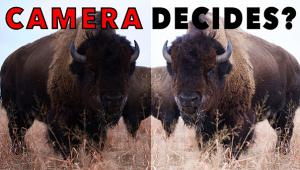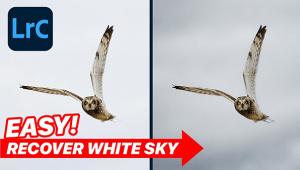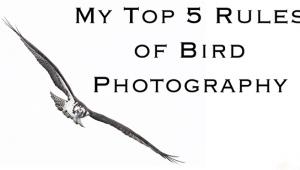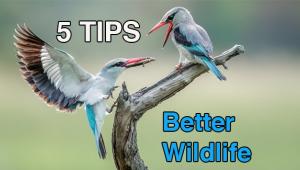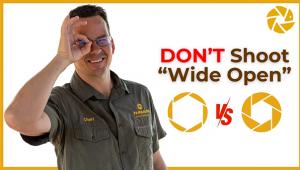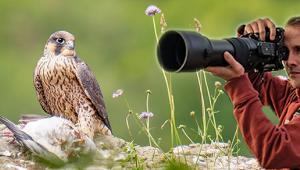Eye Contact: Ron Magill’s Behavioral Analysis
Ron Magill is a trained zoologist and the communications director of the Miami-Dade Zoological Park and Gardens—Zoo Miami for short—and if you think that gives him an advantage when it comes to taking outstanding wildlife images, you’re right. But don’t turn the page. What’s needed to get a share of the wildlife “Wow!” factor is technique, access, and information that’s available to all. You will also need dedication and persistence. Above all, be sure to pack your patience along with your camera and lenses.
“As a zoologist, I understand animal behavior,” Ron says, “and one of the biggest mistakes photographers make is that they’re always chasing a photograph instead of waiting for the photograph to come to them. I’ve led groups to Africa, and we’ll be near a herd of a hundred elephants, and I’ll see people grab their cameras and click away like crazy, and then, after five minutes, they’re ready to move on. Really? The scene is changing every 10 seconds, offering something different, but too many photographers simply want a document to show they were there. ‘I’ve got a picture of this animal…what’s next?’ They feel they’re missing something somewhere else. But it’s not happening somewhere else—it’s happening right here, right now. Wait for it.”
Ron learned early on to be patient, to turn circumstances to his advantage. “I want to be able to have the animal in the frame recognize that I’m there, or accept that I’m there. I want to be part of the world of the animal—that’s the beauty of wildlife photography. I don’t want aggression in the photo—no snarling, no growling. I like animals that are inquisitive, accepting, somewhat relaxed, or if they’re not relaxed, it’s because they’re doing something that’s natural to them.”
Whether you’re photographing an animal in the wild or in a zoo, behavior is always the key. “If you go up in a helicopter in Africa,” Ron says, “you’re going to see the patterns of little trails going through the marsh or the savannah. They look almost like roads made by vehicles, but they’re not—they’re roads made by animals that walk that same path every day. Once you learn their routines, you can prepare yourself for the shot.”
For example…
Okavango Lioness.“She’s coming to take a kill away from wild dogs in the Okavango Delta in Botswana. I’d photographed the kill, then I saw the lioness on the other side of the watershed, and because I knew her behavior I knew she’s was going to come and take the food from the dogs…I got myself into her line of sight so it would look like she was running right at me, but really she was running at the kill that’s right in front of the vehicle I’m in.”
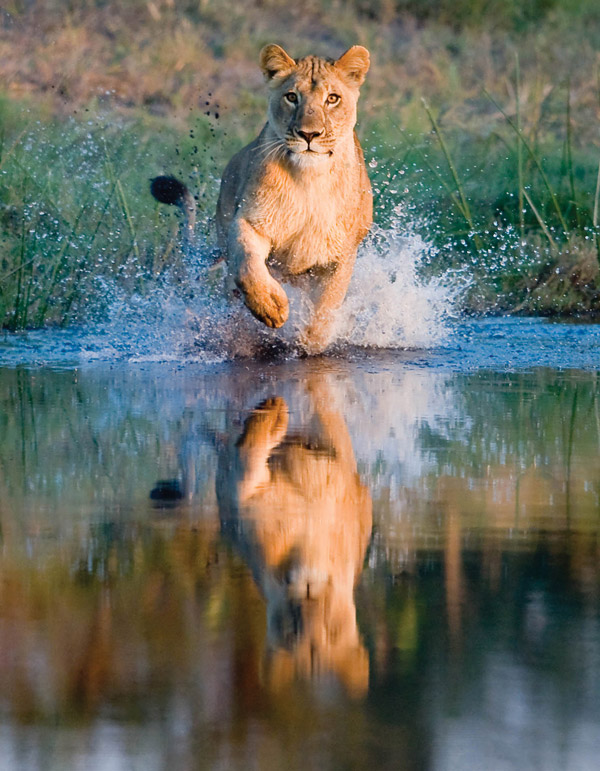
All Photos © Ron Magill
Caribbean Flamingo.“This was shot at Zoo Miami. Every afternoon the setting sun literally sends a beam of light right toward the flamingos. I knew it would happen, so I knew where to be and when to be there.”
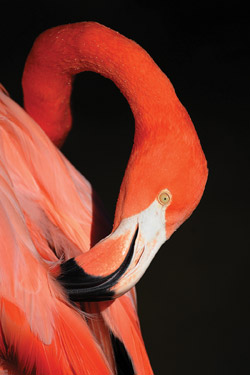
Jaguar.“I took this at Zoo Miami, too. I got right up against the wire and shot through it. I know this jaguar, and I know that first thing in the morning he always comes out and inspects the exhibit area. Animals are creatures of habit, whether in captivity or in the wild.”
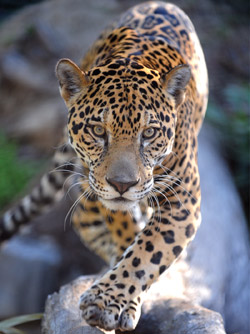
Cheetahs.“I shot this in the Kwandwe Game Reserve in South Africa. The mother cheetah here is practically legendary because of her ability to protect her babies and raise them to adulthood. I was finally able to find her in a thick woodland scrub, and I followed her, trying to get a shot of all of them. When they went up on that termite mound they were finally out of the bush, and there was an unobstructed view, but they were all looking in different directions. After an hour, all of a sudden they heard something behind me, and they all stood up and looked. It was a split second, but that one shot took literally hours of searching, following, and waiting.”

Callimico.“It’s a tiny monkey—very quick, very hyper, tough to photograph. I got this at a Zoo Miami exhibit called Amazon & Beyond. It took maybe 70 shots to get. The animal was backlit by the sun and if I hadn’t used flash I’d have gotten nothing but a silhouette. You’d barely see this moment in real time or in a video—he’s hardly still for a second. But the flash captured him, and it painted the silvery little shine on his coat.”
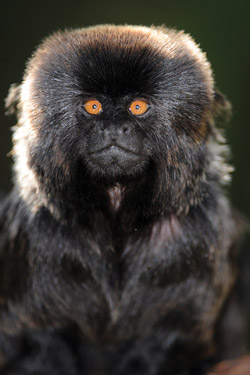
Bengal Tiger.“I had the opportunity to work with this cat in captivity at Zoo Miami. I thought it was so neat how she just turned and her face kind of blended in with the stripes of her body.”

King Vulture.“I shot this in Panama in a rain forest. I’d noticed that this vulture would roost in a tree every night, and in the morning, as the sun came up, he’d open his wings and warm up in the sunlight. I got there before sunrise and was able to climb a hill across from him and shoot straight across at his level. I waited a couple of hours, but it was total luck that he offered this position—his back to me, looking over his shoulder. And any wildlife photographer who tells you that luck doesn’t have a lot to do with it isn’t telling you the truth.”
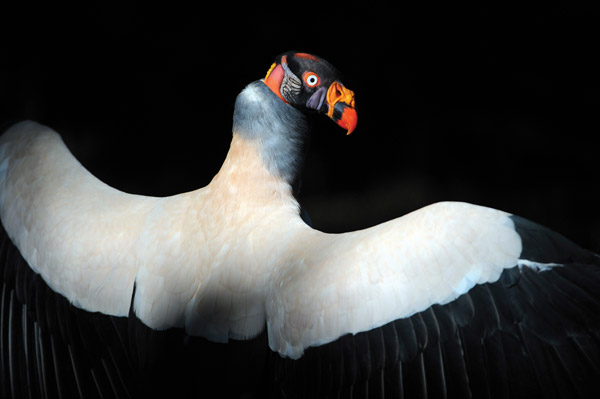
Grevy’s Zebras.“I took this in the Samburu National Reserve in Kenya. I wanted to capture the patterns to show how these animals blend with each other. I saw the zebras walking toward this area, so I positioned myself, thinking, they’re going to walk into the frame. There was no chasing, just waiting.”

Regardless of whether you photograph in Africa, South America, or a zoo nearby, the fundamentals apply: know the habits of the animals, have patience, wait for the moment to happen. “Zoos offer the greatest practice you can get,” Ron says, “and some of the greatest images. You can go day after day, scout the exhibits, learn the animals’ habits. What’s the light like at 2:00 pm? At 4:00 pm? What’s the animal doing at that time? Where should you be waiting?”
Ron finds it’s pretty much the same exhilarating experience regardless of the location. “I’m out with my camera,” he says, “and I feel like a kid, documenting in a split second something that may never happen again, or that I may never again have a chance to see.”
The Ways And Means
• Cameras. Ron shot most of the photos shown here with a D3, a few with a D2Xs.
• Lenses. The workhorse glass is most definitely his 200-400mm f/4. “I probably use it for 90 percent of my shots,” Ron says, “and it’s almost always handheld. I just plant my elbows against my chest, and that’s my tripod.” Another favorite lens is his 600mm f/4, which often requires a monopod.
• Exposure. Ron chooses to shoot aperture priority most of the time, and he keeps his lenses wide-open in order to get as high a shutter speed as possible. What also helps keep the speed up is the ability to push the ISO. The lioness coming across the water, for example, was shot with the 600mm lens wide-open and the camera at ISO 3200 and 1/1000 second. “With wildlife, most of the action is happening right before or right after sunrise or sunset,” Ron says, “so the biggest challenge for wildlife photographers was always to capture that low-light action. Now I can push the ISO and get a much better break on shutter speeds. The sensors in these new cameras have redefined wildlife photography. They’ve made images possible that were not possible 10 years ago.”
- Log in or register to post comments




